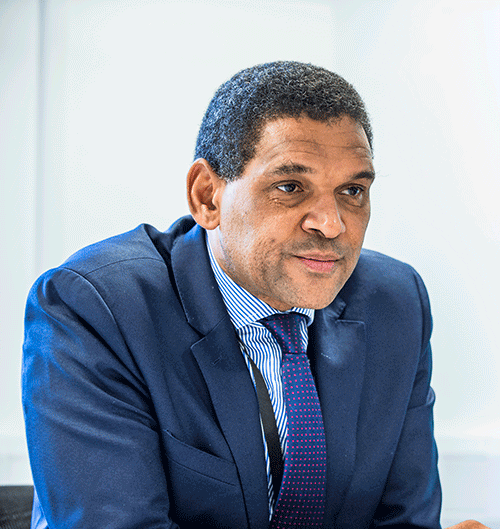 Up on the eight floor of Euston House, in London, lies Digital Railway. Housed in the 1930s red-brick former HQ of the London Midland & Scottish Railway, in Eversholt Street, it has a small reception area with the usual mix of charts and posters.
Up on the eight floor of Euston House, in London, lies Digital Railway. Housed in the 1930s red-brick former HQ of the London Midland & Scottish Railway, in Eversholt Street, it has a small reception area with the usual mix of charts and posters.
On one, there’s a blog. It quotes JFK’s “we choose to go to the Moon…” words, on which RailReview reflected two years ago when this magazine last looked at NR’s Digital Railway proposals. The words capture not only the vision involved with DR, but its difficulties too. Back in 1962, when JFK spoke, no one had been to the Moon. Likewise, no one has yet installed DR on a UK main line.
The blog kept its space theme by then mentioning the ill-fated Apollo 13, immortalised in director Ron Howard’s film of the same name, starring Tom Hanks as Commander Jim Lovell. This was the mission that had America and much of the world on the edge of their seats, as three astronauts and their ground team battled to bring themselves home after an explosion in a fuel tank crippled their spacecraft, leading to a loss of oxygen and power.
The mission could have been a disaster. The crew could have been condemned to orbit their homes forever and a day. Instead it was a triumph of man’s ingenuity. The crew fought the odds, came home safely and (arguably) saved the future of manned spaceflight.
“Why can’t the development and implementation of the Digital Railway be our industry’s finest hour?” asks the blogger. “I think, with the right attitude, it can,” he concludes.
Plenty has changed since RailReview last considered DR, when interviewing former NR Group Asset Management Director Jerry England in November 2014 (Q4-2014). The biggest change is that Network Rail recruited the highly respected David Waboso from London Underground in the middle of 2016, to become DR’s managing director.
He brings considerable experience and credibility. In the early 2000s he led the erstwhile Strategic Rail Authority’s development of European Rail Traffic Management Systems (ERTMS, of which ETCS - European Train Control System is a part), which resulted in the Cambrian Line switching to ERTMS signalling in 2011. He led LU’s resignalling projects for the Jubilee, Victoria and Northern Lines, which delivered significant increases in capacity. He also led the more troubled sub-surface lines project that promises more capacity but which has still to be delivered after several delays and changes of contractor.
Waboso arrived just a couple of months after NR revealed plans to resignal lines between Norwich, Yarmouth and Lowestoft with ERTMS by December 2018. The plan was quickly ditched.
England told RailReview back in 2014: “I want to get to the point where the first project in CP6 is a Level 3 project, which may be quite a tall order to get ETCS from where it is today (which is not very far) to fully implementable in four years. That’s quite a challenge.”
It was indeed a challenge, and you don’t need to take my opinion. In peer reviewing the piece, former Chairman of the Institution of Mechanical Engineers Railway Division Cliff Perry wrote: “Vision 9/10. Reality check 4/10.”
At the time, NR was talking about capacity increases of up to 40%. It still is. There’s no doubt the railway needs this extra capacity. Passenger numbers have doubled to 1.6 billion since privatisation, and in many busy commuter areas trains are as long as they can reasonably be. Station platforms cannot be readily extended in many places. Increasing frequency without any commensurate increase in track capacity causes congestion and delays, such that NR is well adrift of its year-end performance target by 4.6 percentage points, according to ORR.
There has also been widespread scepticism about NR’s goals, both from experts and even the House of Commons Transport Select Committee. In autumn 2016, the TSC was blunt in saying: “Projections based on ETCS Level 3 should only be considered valid when the Level 3 specification is ready for deployment, and Network Rail should avoid using such projections, or the promise of a ‘moving block’ signalling system, in its publicity until such technology is ready to be deployed.”
The whole NR case therefore demands both detail and nuance. When Network Rail talked of 40% capacity improvements, there was a widespread view among signalling engineers that this could only be achieved via moving block Level 3 signalling. That appears to have been the Transport Select Committee’s assumption, despite NR saying it was talking about Level 2. The aim of Level 2 digital signalling is a marked increase in capacity via the installation of more and shorter block sections, which is the way London Underground boosted capacity on the Victoria Line. Level 2 does, however, have substantial installation and maintenance costs, and runs counter to a general view that the future of signalling systems is to have less track kit to maintain, which implies Level 3 signalling. With me so far?!
NR Chief Executive Mark Carne told TSC MPs on May 23 2016: “We are at the forefront of pushing to get a standard version of Level 3, because it is not available off the shelf at the moment. However, we also believe that Level 2 as it stands is a compelling case. So we should not wait for Level 3, we should get on with Level 2 and then upgrade it when Level 3 comes.
“Basically, the technology is interchangeable. You do not have to bin it and then start again - you can just upgrade to Level 3. We need to push ahead with it as quickly as we can, but simultaneously we want to go to Level 3 as quickly as possible because it is much cheaper to install. There is no trackside equipment as such, and it is more reliable, safer and so on.”
Carne is understandably slightly simplifying matters. He’s right that there’s no trackside train detection equipment with Level 3, but there is kit to detect points. So the need for clarity on exactly where we’re heading is clear. Jerry England was aiming for Level 3 immediately. Carne seems to want Level 3 (and the benefits promised certainly seem to require it) - but only as an upgrade after a Level 2 installation, to get the digital system in and running. So I went to see David Waboso, who is as passionate as he is expert on this subject.
Today, right now, Waboso is not aiming for Level 3. He’s clear and upfront about this. This represents a considerable shift from Network Rail’s 2014 position, as explained back then by Jerry England. It is much less of a shift from more recent NR positions as explained and nuanced by Carne. Not least to the TSC. It’s also very similar to Waboso’s position when he was at the Strategic Rail Authority - he was well ahead of the game and advocating Level 2, way back in 2003, which was then reckoned to produce a capacity improvement of around 10%.
Waboso is - maybe understandably - sensitive about this changing (or rather evolving) position. When RailReview talked with him on December 1 2016, he was… prickly …when asked about previous NR positions and statements.
On England’s erstwhile Level 3 ambition for CP6, he replied: “What I would say about Level 3 is simply this: ‘I am not building my plans on Level 3.’ Remember that I said I build bottom-up, not top-down. So let’s be very clear: we are supporting the delivery of the first phase schemes - Thameslink and Crossrail. They have to be successful and I will do absolutely everything I can do to help them be successful. When they are successful, they’ll be seen as (frankly) schemes that any city around the world would be proud to have.
“We mustn’t talk ourselves down. These are fantastic schemes. People are coming from around the world to look at how we do this stuff, and yet we berate ourselves and say how terrible we are. That’s not true. We are a truly world-leading brand in railways and these schemes will be seen as absolute markers, along with the stuff that Transport for London has done, of how to do fantastic, mega-city transport schemes. We mustn’t ignore what they have done and pretend there’s some magic dust somewhere else. Why don’t we just take what they have done and build on it?”
If Waboso has developed NR’s position since England’s interview in 2014, then it mirrors a decision that England was forced to take back in 2014. He’d inherited an ERTMS plan that extended as far as producing a UK map that highlighted lines and their conversion dates to ERTMS. It had, for example, the Blyth & Tyne line switching in 2021 and routes from Aberdeen in 2024. When RailReview interviewed England, he said of that plan: “We haven’t stopped it at the moment, but one of the first jobs we have over the next few weeks (we’ve not got much longer) is to revisit that plan.”
It was ditched.
Waboso is now busily developing business cases for Digital Railway. He’s sensibly clear that he doesn’t “want to get trapped into giving false accuracy of lines and dates”.
So… no map like the one England inherited? I seem to have struck a nerve.
“Look, I’ve been here five months. I’ve come here to build a constructive job, OK? I’m not going to criticise what went before. I’ve come here to do a job, apply my experience, build a team and move forward. That’s what I’m going to do. So I’m not going to answer any more questions on what happened 14 years ago. It’s of no value whatsoever.”
Ouch. All I’m trying to do is track NR’s understandably changing position and its roots in his own experience - not least at the SRA, where he was way ahead of the game. Given that Railtrack promised moving block in the PUG2 upgrade for the West Coast Route Modernisation at the turn of the century, and had to embarrassingly drop the scheme because it simply wasn’t deliverable, I think it’s important to set all this in historical and practical context. It’s also right that we should at least question and test deliverability. The simple truth is that in pursuing Level 2, Waboso in his new role at NR is taking a very different line to that pursued by England two years ago. It’s a much more realistic line and it chimes with what Carne told MPs in May 2016. I seek clarity, however, and context. I think we’ve done that, if a bit vigorously. I like Waboso’s passion, to be honest. We move on.
Digital Railway
What is Digital Railway to Network Rail? Simplistically, it could be seen as resignalling, but it’s much, much more than that.
Waboso explains: “Digital Railway is probably three things, of which the digital railway programme is focusing on the first - but it leads on to the other areas. I think you’d start by saying it’s the command and control systems – and that’s a combination of ETCS , ATO , CDAS , traffic management, telecoms and then all the industry processes, people and plans around that. That’s what we’re really focusing on.
“The second part of the digital railway is the smart infrastructure - smart trains, remote condition monitoring, predict-and-prevent railway that leads you to a much more efficient and reliable asset, because you then move into the sphere of more fully understanding your asset. If you understand your asset’s performance, you’re able to maintain it in a totally different way.
“That’s the second part of it, and a lot of it’s in the Group Digital Railway. People often ask the difference between DR and Group Digital Railway. DR is the first and Group Digital Railway leads you to the second because it has not just telecoms but also asset inspection trains. It has ORBIS , which is leading us into the future of the asset management world, and we’re still innovating on some more stuff around that.
“In the third bucket, if you like, is passenger information and ticketing and all that stuff. And again, because of telecoms, we have a strong link to that. But we don’t do that because that’s much more in the TOC/RDG world. But we support that, because once you have intelligence on trains and intelligence trackside and a very good comms system, you’re able to do a lot with all that as an enabler.”
Looking in more detail at all that more forensically reveals a further change to what’s gone before, which comes as a result of Waboso’s insight and experience. Evolution, in other words. The current ‘framework outline business case’ from November 2015, that sits on NR’s Digital Railway website lists Phase 1 projects as being Romford traffic management, Level 2 deployment on the Paddington approach to Heathrow Airport, and Level 2 deployment to the East Coast Main Line.
Waboso explains: “My experience of doing this stuff, which I’ve done for longer than I care to remember, is that you need to build up from the bottom as opposed to taking it down from the top.”
“And so if I build from the bottom, I’ve got some schemes that are going on. Those are the Phase 1 schemes, which are Thameslink, Crossrail and Romford. Those are the big three current digital schemes and we’re working very hard to support those schemes.
“Crossrail and Thameslink are their own programmes with their own governance, so we don’t get in the way of that - it’s very important not to confuse accountabilities. We are supporting in any way we can and supporting to ensure they are successful. It’s very important that they’re successful because they provide the confidence that digital railway technology can deliver.”
That last point is vital. Digital Railway’s detractors could portray the programme as ‘order, counter-order, disorder’. The changes over the past few years could be seen to validate this view. Since he arrived last summer, Waboso has clearly seen, however, that the programme needs to associate itself with some successes, even if (like Thameslink) they are at arms-length. Entirely understandable.
Thameslink does many of the things associated with a digital railway. It includes Automatic Train Operation, high capacity from short block sections, and a traffic management system that works with ATO to feed trains efficiently through the incredibly congested central core through London, from King’s Cross to Blackfriars. This core is based on ERTMS, but the lines feeding it from north and south, are not.
There’s another dose of nuance needed here. European rules mandate ERTMS for lines that form part of its trans-European network (TENs lines). This means Britain must install it on the country’s TENs lines, rather than any proprietary system a manufacturer might otherwise offer. It could install proprietary kit on other lines, but that would open all sorts of problems with compatibility and would be more trouble than any financial savings might represent. It also assumes, by the way, that manufacturers would offer anything other than ERTMS – and this is probably unlikely, given that it’s being used all round the world and is increasingly the only form of modern signalling, command and control technology you can buy.
There’s a parallel with personal computers. A few years ago you could buy an external hard drive with either a USB connector or a Firewire connector. Both hard drives would do the same job in the same way. But you couldn’t use a Firewire version if your computer only had only USB ports. Today you won’t find Firewire versions on sale - the standard is USB, so that’s what you buy and use.
In the same way, ERTMS is without question the way forward, and Thameslink can today show the benefits of digital railway principles (although passengers will have to wait a little longer as the new kit and new trains are tested and commissioned).
The experience that Waboso brings from London Underground is based on these principles. It’s valuable, as he relates: “First, you bring credibility and confidence that it can be done. That’s the first thing you bring. It’s not vapour-ware. It’s not people promising. It’s experience of what can be done, and the scars because the experience that matters is ‘where are the pitfalls, where are the mistakes, where are the risks’.
“That’s what you pay people for in this business. So you bring the credibility of doing it, and you bring the capability. You attract the people who follow you around and want to play in this space. You bring people who have done it. I tend to move around and bring the same people because I gather people around who’ve done it before. I’ve got people here who’ve delivered DLR, who’ve delivered the six lines I’ve talked about on the Underground. I’ve got people who have done this in Singapore, in Hong Kong - they’ve all joined. I’ve got people from Thameslink, not from Crossrail yet because they need every person they can get.”
What of the differences between LU’s network and NR’s?
“The basic laws of physics and electronics still apply. The big difference is that you’ve got mixed fleets, whereas on the Underground it’s largely a captive fleet on a given line, with some notable exceptions. The sub-surface lines are more challenging because you have Met, Jubilee and Picc running. You have Triangle Junction, which I think is one of the busiest junctions in the world - that’s Aldgate way with 1,400 train movements a day. TfL is having to face some very complex junctions.
“On the Northern Line: everybody was dead scared about some locations, specifically Kennington and Camden - they are difficult junctions - high-capacity, very difficult junctions, but it shows DR can work on difficult junctions. The Jubilee Line has shown it can work with screen doors and lots of different other applications, junctions and sidings - Wembley, Stanmore, at Stratford, for example.
“You know, these are complex layouts, so it shows it can work with that. It shows it can work with massive capacity and lots of people, lots of issues and high passenger demand. It also shows that you need to harmonise this with the operating ‘spec’. It shows you have to link in to how you manage stations, dwell times, how you manage your staff and how you turn trains round in terminal stations. All that is positive experience, but the big difference with the main line is the mixed traffic.”
Waboso’s summary neatly and effectively counters the common - and rather dismissive - view that LU lines are simple when compared with main lines. Yes, the Victoria Line might be essentially only a twin-track railway with crossovers at each end and a uniform fleet of trains. But those trains pause only a few minutes at their termini before reversing. The trick for the main line railway will be to improve capacity and turn-round times at termini and capacity through junctions, to ensure the benefits of the easier job of running more trains over sections of plain line are not lost in delays at those termini and junctions. The pay-off for DR is getting to this potential nirvana from where our railway is right now.
Waboso: “The end-state is always fantastic, how you get there in a very busy operational railway is the challenge. So the migration would probably be: do you first create shorter blocks as part of your resignalling, buy your trains with ERTMS fitted, overlay ETCS, and put your block marker boards down for your shorter signals that then benefit the fitted trains, because they have computers and can take advantage of that, while the unfitted trains are still driven and controlled according to lineside signal indications.
“So you’re not getting a disbenefit for the unfitted trains, but you are getting a benefit for the fitted trains. Then, at some point, when you equip enough trains (and I always have these two dials in my head - the infrastructure dial and the trains dial), you are able to take the decision to remove the signals. You’ve already invested in the shorter tracks , so they never come out.
“So you move from full digital benefit for fitted trains to benefit for ALL trains. And the price for that is to equip all trains. So that’s an option for track and train rollout but at that point, as well as benefit for all trains, you get ‘opex’ savings because you also take down all signals. So, it’s more an incremental benefits realisation.
“Now, what I’m saying is that that gives you a lot of the benefit of Level 3 because you’ve started to reduce your infrastructure. But it’s true to say that you still have to detect the shorter blocks. You have to put in the block layout. Now, the question I’ve got is: ‘Does taking out the shorter blocks, because Level 3 does not have a block layout, give you the big benefit that is claimed?’ Because you will still need to have detection around points. There is potentially still a requirement for unfitted trains unless you are absolutely able to guarantee that absolutely all trains will be fitted.
“You have to look at the facts. You need to be careful about how you then deploy the migration strategy and understand how it’s going to work. So that’s why I’m not going to build this plan on Level 3 as a fantastic thing, because I think that Level 2 with no signals takes me a long way down the Level 3 road. The key issue is to have onwards compatibility with Level 3.
“Your specification for Level 2 must be such that you can build Level 3 on it at very small cost. You don’t want people to say ‘oh blimey, all those computers need to come out’ because it’s a big processing change. That’s probably more the trick, if I’m honest. So that’s one of the things we’re looking at.”
One major difference from LU to NR is the variety of trains running. LU has, by and large, a uniform fleet per line with very little crossover of train types. You won’t find a Northern Line train at Hainault, and a Met train is never going to appear at Southwark. The trains on each route are effectively uniform in terms of speed, acceleration, braking and so on.
It prompts a question from Waboso: “Do you fit all the trains and go to ‘no signals’ quickly? Or do you leave - as in Thameslink - an overlay solution so that you can still run unfitted trains? These are all the options that we have to look at in the forward plan.
“And you have high speed, you have 125mph. On the Tube you don’t get much beyond 60kph or 70kph . The basic rules of ‘it does work and it can work’ have been proven. The question is how you apply it to the main line.
“And so for Level 3, you get issues on the main line such as variable train lengths. So with Level 3, where you don’t have a lot of train detection, how do you manage that? What are the operating rules?
“On the Underground, the big lesson is to spend a lot of time working out what the operational rule set is, because all that is then coded into the software. You spend a lot of time marshalling all the various parties to define that and then you go for preliminary design review (PDR). It’s a big thing. This alone could take two years. You get your people and you fly them out to the software developer - because every minute spent on that is worth a thousand minutes downstream.
“The main line railway will have to decide what its operating rule set is when it comes to train detection and mixed fleets. Or do you start getting some more predictable configurations on lines? These are all the options to look at. These are all the process things that we need to discuss with franchisees, the DfT and train companies.
“But as I said, your migration will give you a lot of benefit, but if you want to get to truly ‘no signals’ with all trains fitted then that’s another step to take. And, beyond that, there’s another step to full Level 3. Thameslink shows that you can indeed do this and have a very strong business case for the fitted trains.
“So I think back to my strategy about targeted deployment. We need to look at where this makes sense to do early, as opposed to the very difficult routes that are very messy. Perhaps you would think a bit harder and longer about how you would convert them.”
Waboso’s compelling thinking certainly is ‘bottom-up’. It dove-
tails neatly with what Chief Executive Mark Carne said, when he told MPs in May 2016: “On ETCS level 2, I would argue that we should get on with it now in the areas where we are already capacity-constrained, because it will unlock capacity and enable us to deliver capacity without having to make very expensive physical interventions.
“Yes, of course it would be nice if we had Level 3, but we do not have it. That does not mean to say that we should not get on with Level 2, because it is certainly better than what we have. Level 2 is still better than creating capacity through the kind of physical interventions that one would otherwise have to make.”
It’s clear from Carne’s words and Waboso’s comments that there would still need to be physical interventions to install extra track circuits or axle counters, but this should be less disruptive and certainly cheaper than building new tracks, junctions and platforms to create the capacity required for non-fitted trains.
So much for the technology. The other aspect of Digital Railway concerns people. They will have to use that technology. They will have to become used to new working practices.
Waboso says: “That’s the stuff you have to address up front. If you don’t have your people with you then no new technology will work. You’ve got to engage with your workforce and engage with your unions, which - if I’m honest - I’m not sure we’ve done enough of in the past. I’ve had one very general presentation to the unions, and I plan to engage them far more as we go down the road. But, again, you have to be respectful of the way the industry is organised because a lot of the unions and the workforce are associated with train companies, so we have to work together on this.
“It’s not a centralised ‘one-size-fits-all’ solution. That’s a very important point. There are local differences of geography, of train layout, of infrastructure layout, of the way the railway works. You have to be respectful of that. That’s the other big difference. LU was fairly monolithic, this is a variable railway, so the devolved routes with the TOCs will be the ones with most of the workforce and most of the negotiation because they respect and reflect the way those railways work.
“We’ve started working very closely with the train companies and the freight companies and the supply chain, because the supply chain has a very big role in this as well. We’ve started that engagement, but it needs to step up to another level as we move towards the next phase of delivery. You also have to respect the local differences - you can’t impose a Welsh solution in the middle of London because they are very different railways.”
A further area into which Waboso is putting considerable thought and time is the supply chain - the companies that will be producing the kit he plans to install - the big multi-national railway engineering companies such as Siemens, Alstom and Bombardier.
He’s started work with an initiative called ‘early contractor involvement’ (ECI). He says: “They welcome this. They’re up for DR because they think it can provide benefits for everybody. It can create jobs, reskilling the workforce, but they’re also saying they want to work in a different way and take on a greater role with an output ‘spec’ that allows them to innovate. This is not just like buying a load of relays where you can say ‘I want a relay XYZ’. This is buying software-based solutions. We’re moving firmly into the real digital world.
“The way we all innovate in our personal lives is where this is heading to. They want much more space to innovate around our requirements, so we need to be much better at writing our requirements in an output-based way and them then delivering solutions.
“You know, around the world these guys are providing solutions, they provide services, they provide outputs and contracts. They’re saying that’s the different way they want to work, and I welcome that. The second thing they say - and I’m encouraging this - is that they want to have a whole-life supplier relationship. Again, when you’re just buying relays you could, arguably, buy them and stick them in the ground and maintain them. This stuff is like an iPhone - the minute you leave the shop it’s obsolescent. You’ve got to recognise that if you don’t have a whole-life supplier relationship then it’s not going to work.
“I tell the story of visiting a supplier a couple of years ago and I said: ‘Do you know the whatever it was is hopeless. It’s not working very well.’ And he said: ‘What? I had no idea.’ What other industry would have such a disconnect between the people who made something and its performance? So they said: ‘We must find out more.’ And I said: ‘Here’s the report.’ And they were interested in that.
“It’s really strange. I compare that with the airline industry, where airlines buy power by the hour. I want to have a relationship with them that takes them not just through first cost but through performance, reliability, availability, upgrades, obsolescent manage-ment, because that’s where this is going.
“It’s a really exciting game-changer for how we work in the digital space, which I include signalling because signalling is changing the digital space, so it’s quite good. And it talks about if we work in this different way we think there are efficiencies to be had, which I think is inarguable because you won’t have man-marking - you have a much different relationship where you give them a job and they take technology risk and deliver outputs. And they have some incentive for whole-life performance.”
So which is harder? The tech or the people?
“That’s a difficult one. They are both hard. Very hard. But ultimately you can resolve the technology. But people management, and the change and the training and the familiarisation and the competence management and the hearts and minds and all that stuff, that needs a huge amount of effort.
“You can’t just view this as a technology project. It’s like you’re asking me to choose between my children. They’re all important. They’re all loved. Equally. If you prioritise on one you’re going to stuff up on the other, aren’t you?! They are all absolutely critical.”
So you worry about both?
“I love both,” Waboso says with a smile.

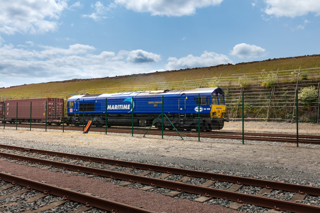
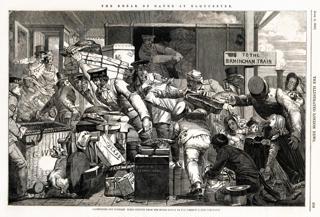
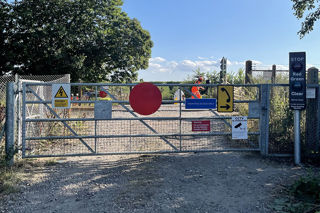
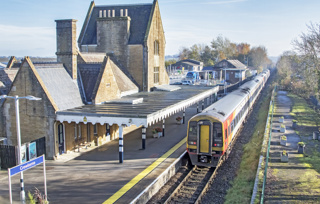
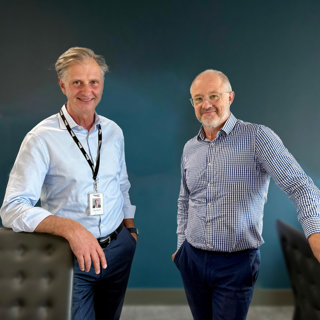

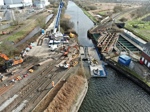







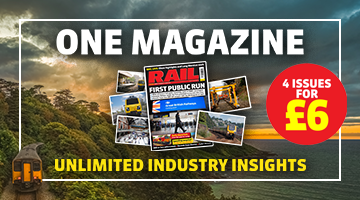

Login to comment
Comments
No comments have been made yet.